The earth's environment : animal habitats
Key inquiry question #1
How does the environment support the lives of living things?
Content
Significance of environments
Students:
- investigate the importance of natural vegetation and natural resources to the environment, animals and people, for example: (ACHGK021, ACHGK022, ACHGK024)
- explanation of the importance of natural vegetation to animals and the functioning of the environment (ie. it allows homes and habitats)
Background Notes for Teachers
Particular natural features in a forest environment provide elements of habitat for animals. This learning sequence focuses on trees, shrubs and groundcover plants as examples of important living habitat elements, and on leaf litter, water and rocks and logs as examples of non-living habitat elements.
Animals often rely on several habitat elements within an environment. For example superb wrens shelter amongst shrubs, forage for invertebrates amongst the leaf litter and shrubs, and need a fresh source of water. Some animals particularly rely on one habitat element and could not survive without it in an environment. For example rainbow lorikeets breed in tree hollows, usually found in mature gum trees.
Interconnections between the environment and animals links with Stage 2 Science – Living World strand, in particular, “Living things, including plants and animals, depend on each other and the environment to survive. (ACSSU073)”. Students could undertake a scientific investigation such as a leaf litter hunt to investigate the diversity of living things found in their school environment and the relationship between plants and animals.
Student Activities
Rainbow lorikeet habitat
Students study a drawing of a rainbow lorikeet and answer questions about its habitat.
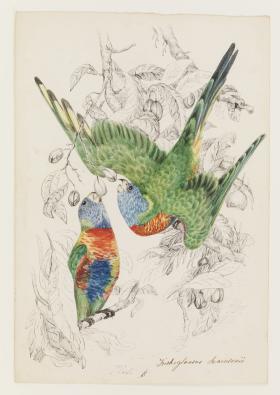
Natural features of a forest
Students examine a colonial drawing of a forest and label the natural features and animal habitats.
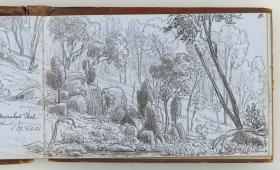
What are animal habitats and the elements of habitats?
Students view botanical drawings of plants and highlight each labeled natural feature that is a habitat element.
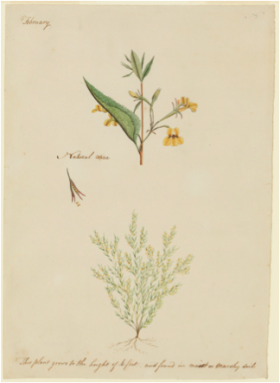
Where are animal habitats found?
Students create a photo sketch of a forest environment and list all the habitat elements.

Why are natural vegetation and non-living habitat elements important to animals?
Students view botanic drawings and identify what the habitat elements in the natural environment provide for each animal and complete a table.
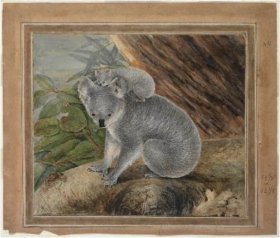
Stop habitat removal: Interconnections between animals and their habitats
Students list the types of habitat elements that might be found in a eucalypt forest and explain how the animals rely on each element in the environment.
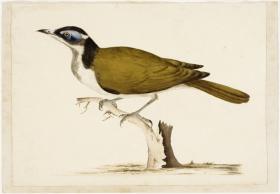
NSW Syllabus for the Australian Curriculum Geography K–6
Astudent:
- GE2-2 describes the ways people, places and environments interact
- GE2-4 acquires and communicates geographical information using geographical tools for inquiry
Acquiring geographical information
- develop geographical questions to investigate (ACHGS019, ACHGS026)
- collect and record relevant geographical data and information, for example, by observing, by interviewing, conducting surveys, or using maps, visual representations, the media or the internet (ACHGS020, ACHGS027)
Processing geographical information
- represent data by constructing tables, graphs and maps (ACHGS021, ACHGS028)
- represent information by constructing large-scale maps that conform to cartographic conventions, using spatial technologies as appropriate (ACHGS022, ACHGS029)
- interpret geographical data to identify distributions and patterns and draw conclusions (ACHGS023, ACHGS030)
Communicating geographical information
- present findings in a range of communication forms, for example, written, oral, digital, graphic, tabular and visual, and use geographical terminology (ACHGS024, ACHGS031)
- reflect on their learning to propose individual action in response to a contemporary geographical challenge and identify the expected effects of the proposal (ACHGS025, ACHGS032)
- Place: the significance of places and what they are like (ie.natural and human features and characteristics of different places and their similarities and differences; how people’s perceptions about places influence their responses and actions to protect them).
- Space: the significance of location and spatial distribution, and ways people organise and manage spaces that we live in (ie.settlement patterns within Australia, neighbouring countries and other countries).
- Environment: the significance of the environment in human life, and the important interrelationships between humans and the environment(ie. how climate and environment influence settlement patterns; interconnections between people and environments; differing ways people can use environments sustainably).
- Interconnection: no object of geographical study can be viewed in isolation (ie. interconnections between people, places and environments; influence of people’s values on the management and protection of places and environments and the custodial responsibilities of Aboriginal and Torres Strait Islander Peoples).
- Scale: the way that geographical phenomena and problems can be examined at different spatial levels(ie. types of settlement across a range of scales; the influence of climate across a range of scales).
- Sustainability: the capacity of the environment to continue to support our lives and the lives of other living creatures into the future (ieways in which people, including Aboriginal and Torres Strait Islander Peoples
Learning Across the Curriculum
- Sustainability
- Critical and creative thinking
- Literacy
- Civics and citizenship
- Difference and diversity
Resources
Picture books
The Hunt by Narelle Oliver
Leaf Litter by Rachel Tonkin
The Bushwalk by Sandra Kendall
Websites